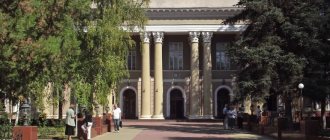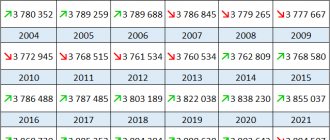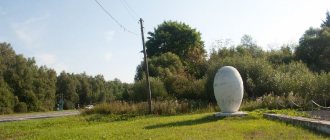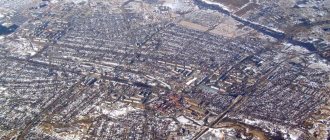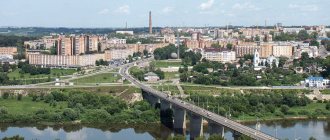Content
- 1 Cathedral of the Icon of the Mother of God “Recovery of the Lost” (Efremov)
- 2 Temple of the Matrona of Moscow (Efremov)
- 3 Temple of the Life-Giving Trinity (Efremov)
- 4 Temple of Michael the Archangel (Efremov)
- 5 Temple of St. Nicholas the Wonderworker (Efremov)
- 6 Church of the Intercession of the Blessed Virgin Mary (Grace)
- 7 Church of St. Nicholas the Wonderworker (Big Rafts)
- 8 Church of Luke of Crimea (East)
- 9 Church of St. Nicholas the Wonderworker (Vyazovo)
- 10 Temple of the Kazan Icon of the Mother of God (Dubiki)
- 11 Temple of the Savior Image Not Made by Hands (Lobanovo)
- 12 Church of St. Nicholas the Wonderworker (Mechnyanka)
- 13 Temple of the Apostles Peter and Paul (Novokrasive)
- 14 Church of the Epiphany (Ovsyannikovo)
- 15 Temple of Demetrius of Thessalonica (Pozhilino)
- 16 Temple of the Kazan Icon of the Mother of God (Turten)
- 17 Church of the Assumption of the Blessed Virgin Mary (Khmelevoye)
- 18 Temple of Michael the Archangel (Khomyakovo)
Cathedral of the Icon of the Mother of God “Recovery of the Lost” (Efremov)[edit]
The Church of the “Seeking of the Dead” was built on the site of the Church of the Transfiguration of the Lord (Nikitsky) of the early 19th century, which was destroyed in the 1930s.
In the 1970s, Efremov’s believers could not regularly attend services - the nearest churches were in the suburbs.
In 1989, a small wooden church with a capacity of 250 people was built. In the fall of 1992, construction of a stone temple began.
In 1996, the main altar was consecrated in honor of the icon of the Most Holy Theotokos “Seeking the Lost.”
In 2012, the temple in honor of the icon of the Mother of God “Seeking the Lost,” which is the second department of the Tula diocese, was given cathedral status.
Address:
Tula region, Efremov, st. Dachnaya, 2.
Population in modern times
The first post-war data from 1959 recorded 28,672 inhabitants. In the 60s, the construction of new lines for the production of synthetic rubber was declared an All-Union Komsomol construction project. Young people from all over the country came to the city to build, and then to work in chemical production. The population in 1970 reached 48,156 people. Until 1989, the population continued to increase due to the influx of labor resources into expanding and new industries. During these years, a chemical plant and a glucose-molasses plant were built. New residential neighborhoods have been built.
In 1986, the maximum number of residents was reached - 58,000. In the post-Soviet years, the population of Efremov gradually decreased almost all the time. Despite the fact that the chemical industry survived the crisis relatively painlessly, and the American one, one of the largest in the world, came to the glucose-molasses plant. Like any small provincial town, and also a single-industry town, Efremov cannot offer young people jobs except at city-forming enterprises. Therefore, young people leave for larger cities. In 2021, the population of Efremov, Tula region, was 35,505 people.
Church of the Life-Giving Trinity (Efremov)[edit]
The Trinity Church was the oldest in Efremov; its foundation dates back to the construction of the fort - the 1630s. Initially, the temple with the chapel of the Smolensk Icon of the Mother of God was wooden. The stone Cathedral Church was built in 1795. Closed in 1929, finally destroyed in 1945.
On November 6, 2000, the laying of the foundation stone for the modern Church of the Life-Giving Trinity took place.
In 2001 the church was built. The interior decoration differs from the previous temple: the wall paintings have been replaced by large human-sized icons.
Together with the Church of the Archangel Michael, it is part of the temple complex in the City Garden on Red Square.
Address:
Tula region, Efremov, Red Square, City Garden.
Education of the city
With the advent of a settled population, some areas of terrain or forest land were named by nickname or personal name. Thus, a small part of the forest began to be called Ofremovsky (Efremovsky). During the development of the territory of the Black Earth Region in the 17th century, the land became the patrimony of the nobleman Ivan Turgenev. Around 1630, he founded the village of Efremovskaya (according to another version, the village of Efremovskoye).
In 1637, by decree of Tsar Mikhail Fedorovich, an oak fort was built in Efremov, which stood until 1689, after which it was dismantled. The fortress was inhabited by boyar children and city Cossacks. They served to protect the country's borders and received land in the surrounding area as compensation. At first, peasants moved to Efremov voluntarily. Under Peter, the lands gradually passed into the ownership of landowners, where serfs began to be brought. During the ongoing administrative reforms in 1719, Efremov became a district town.
Church of St. Nicholas the Wonderworker (Efremov)[edit]
According to surviving legend, the wooden parish St. Nicholas Church stood in a different place until 1792. Due to the new layout of the city, the church was moved and replaced by a stone one, which existed until 1832.
Later, a new stone church was built on the same site. It has not survived to our time.
The modern church in honor of St. Nicholas the Wonderworker was built a little away from the last St. Nicholas Church.
Consecrated in 2009.
Address:
Tula region, Efremov, Komsomolskaya str., 19 a.
Population in pre-revolutionary times
The first people settled on the territory of modern Efremov in the 16th century; the settlements were small. Almost the only trade was beekeeping. The first data on the population of Efremov dates back to 1800. At that time, the population of 1,800 people consisted of burghers who were mainly engaged in the production and trade of grain. The development of manufactories and small handicraft industries led to an increase in the number of residents to 3,000 people. The population then continued to grow, reaching 9,800 people in 1856, and by 1861 it had grown to 10,500 people.
After the abolition of serfdom, peasants began to leave the poor agricultural region to work in industrial centers - Tula and Moscow. In 1897, the population of Efremov fell to 9,000 people. After the construction of the railway, grain trade revived again, and the processing of agricultural products - flour milling and distillery - developed. Due to this, the number of residents increased to 12,600 in 2013. The latest pre-revolutionary data from 1914 showed the number of inhabitants at 14,500 people.
Church of Luke of Crimea (East)[edit]
In April 2015, believers in the village of Vostochny approached the diocese with the initiative to build a church.
We managed to find a former pumping station, where reconstruction began with the help of parishioners and benefactors. A bell tower was attached to the building.
On June 11, 2015 – the day of the saint’s Dormition – the first liturgy was served in the church.
On October 26, 2015, the consecration of the temple took place.
The temple became the first in the Tula region to be consecrated in honor of St. Luke (Voino-Yasenetsky).
In the temple there is a particle of the relics of St. Luke of Crimea.
Address:
Tula region, Efremovsky district, Vostochny village, no. 14.
Church of St. Nicholas the Wonderworker (Mechnyanka)[edit]
The wooden church in the village was consecrated in 1766.
The stone church was built in 1810 at the expense of parishioners and donors.
In December 1937, the rector was arrested, the temple was looted, and a warehouse was set up in the building.
In 1991, local residents began work on restoring the temple: the bell tower, iconostasis, and wall paintings.
On June 14, 2007, the discovery of the relics of St. John Sezyonovsky, secretly buried in a crypt near the southern altar wall of the St. Nicholas Church, took place.
Address:
Tula region, Efremovsky district, Mechnyanka village.
Population: between two wars
The post-revolutionary years had a hard impact on the city; surplus appropriation - the confiscation of food from an already poor population - caused famine and a peasant uprising. As a result, by 1926, the population of Efremov, Tula province, decreased by a third, to 10,000 people. Due to extreme poverty, the population lived on a semi-subsistence basis and by 1931 had already decreased to 9,300 inhabitants. After the start of the industrialization policy, several industrial enterprises were built in the city, including factories for the production of ethyl alcohol and synthetic rubber. The population of Efremov more than doubled by 1939, to 26,708 people.
Temple of Demetrius of Thessalonica (Pozhilino)[edit]
The temple in honor of the Holy Great Martyr Dmitry of Thessalonica was built in 1845 by Alexei Levshin, the landowner of the village of Pozhilino, with the help of parishioners.
It was closed in 1922. Since 1936, a village club has been organized in the refectory, and a grain warehouse has been organized in the summer church.
In 1997, the dome collapsed and the temple began to collapse.
In 2012, restoration work began: a dome was erected, an iconostasis was purchased, and a sculpture of the Mother of God was installed.
On December 7, 2014, the temple was consecrated.
On December 17, 2021, the consecration of the chapel took place in honor of Alexy, the man of God.
Address:
Tula region, Efremovsky district, Pozhilino village, Tsentralnaya st., 6a.
Temple of the Kazan Icon of the Mother of God (Turten)[edit]
The Kazan Church was built in 1802 by Prince Pyotr Ivanovich Odoevsky. In 1840, a chapel was built in it to Flora and Lavra. Instead of the ancient chapel, a stone chapel was built on the site of the appearance of the icon in 1848.
In the 19th century, the icon of the Mother of God was placed at the royal gates, and in the chapel at the source there was a copy of it. On the day of the Kazan Icon, many pilgrims gathered in Turten.
In 1937, the temple was closed, and later the chapel at the source was destroyed.
In 1947, the temple was returned to believers.
The temple was returned to believers in 1989 and restored. The spring and bathing area have been improved.
Address:
Tula region, Efremovsky district, Turten village.
Church of the Assumption of the Blessed Virgin Mary (Khmelevoye)[edit]
The Assumption Church was built in 1837 - 1850 on the site of a dilapidated wooden church.
Expanded in 1872.
Under Soviet rule, the temple was closed and destroyed.
Returned to believers in 2002, it was restored by the efforts of parishioners and management of the farm.
On November 15, 2012, the consecration of the restored church in honor of the Dormition of the Mother of God took place.
On December 24, 2012, the chapel of the blessed Prince Alexander Nevsky was consecrated, and on February 2, 2013 - the Great Martyr George the Victorious.
Address:
Tula region, Efremovsky district, village. Hoppy.
Location : - 310 km south of Moscow, - 149 km from Tula, - 53° 8 north latitude and 38° 7 east longitude, - on the Moscow-Donbass railway line (Efremov station), - federal highway M4 "DON".
Area : - 21.83 square kilometers.
Population : 46.4 thousand people, of which - 38.5 thousand adults, - 7.9 thousand children, - 30.2 thousand working-age population, - 12.9 thousand - number of workers in enterprises, in organizations and institutions - 6.9 thousand schoolchildren and students in secondary specialized institutions.
City code : - 48741, - 241 - for calls from the Tula region.
Main dates of the city
- 1637 - foundation of Efremov. - 1874 - opening of a railway line passing through Efremov. — 1778 — Catherine II approves the city’s coat of arms.” — November 16, 1779 Catherine II issues a decree on the development plan for the city of Efremov. - July 7, 1931 - start of construction of the Efremov SK plant, launch on May 27, 1933, July 11 of the same year - the first ton of rubber. - March 20, 1933 - Efremovskaya CHPP produced the first industrial current. - February 24, 1934 - Efremovsky BCP came into operation as a technical alcohol plant, since 1961 - an acetone-butyl plant (AB), since 1970 - a Biochemical Plant (BCP). - from November 21, 1941 to December 13, 1941 - the city was occupied by German troops, liberated by the troops of the 3rd Army under the command of Ya. G. Kreiser. — 1976 – start of construction of the Efremov chemical plant; December 24, 1982 – the act of commissioning the ECP was signed. - August 1983 - Efremovsky glucose-molasses plant was built. — 1985 – construction of the Urengoy-Uzhgorod gas pipeline branch. - 1987 - on the eve of its 350th anniversary, the city was awarded the Order of the Red Banner of Labor. — 1998 – adoption of the Charter of the municipal formation “City of Efremov and Efremovsky District of the Tula Region.”
Famous people of the past and present
The following were born in Efremov: - Vladimir Mikhailovich Myasishchev (1902-1978) - an outstanding aircraft designer; — Konstantin Konstantinovich Ivanov (1907-1984) – People’s Artist of Russia, chief conductor of the Bolshoi State Symphony Orchestra, State Prize Laureate; — Lyudmila Mikhailovna Fetisova (1925-1962) – Honored Artist of the RSFSR.
Russian, Soviet writers and poets have visited, lived and worked in the city of Efremov and the Efremov district (county): - I.S. Turgenev, - V.A. Zhukovsky, - A.S. Griboyedov, - M.Yu. Lermontov, - A. Koltsov, - L.N. Tolstoy, - A.P. Chekhov, - N.V. Uspensky, - A. Bely, - I.A. Bunin, - K.G. Paustovsky, - S. Malashkin, - V.A. Levshin, - A. Vesely.
Stebut I.A. (1833-1923) - one of the founders of Russian agronomic science lived and worked in the village for a long time. Krotkom of Efremovsky district. Marshal of the Soviet Union A.M. Vasilevsky, Lenin Prize laureate – chemist V.I. Anosov, artists - Gushchin A.I. and Mayorov A.R. Buried in Efremov: the mother of the famous Russian writer I.A. Bunin, two heroes of the Soviet Union - Korotkov and Novik.
Honorary citizens of Efremov : Afanasyev G.F., Arsenov M.I., Venediktov Yu.S., Zakolodnaya L.G., Klesarev A.I., Fedorov S.I., Bogdanova V.I., Azeev Yu.I. ., Timokhina K.I.
